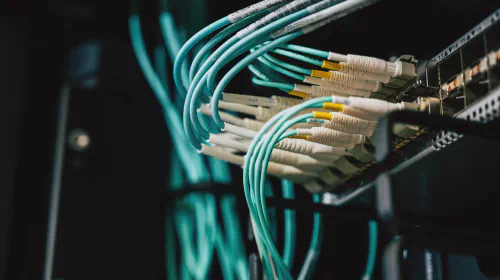Top Reasons Why Your Bitcoin Transaction is Still Unconfirmed
Salomon Kisters
May 13, 2022This post may contain affiliate links. If you use these links to buy something we may earn a commission. Thanks!
Every time someone spends bitcoin, it has first been sent into what’s called the memory pool or “mempool,” where transactions wait for confirmation from miners before they can become an official part of the digital ledger known as the blockchain.
The increased demand by users coupled with an increase in supply causes congestion within this space, leading to slow transaction speeds.
If you’ve ever traded Bitcoin – or any other cryptocurrency – then you probably have experienced a delay in the confirmation of your transactions. Transactions can sometimes be completed in minutes while remaining unconfirmed for more than 24 hours on other occasions.
Experiencing a delay in confirmation of a Bitcoin transaction can induce some anxiety, but it’s a normal thing to expect on a blockchain network.
In this article, we cover some of the top reasons why your bitcoin transaction remains unconfirmed.
What Happens in a Bitcoin Transaction?
Let’s start with the basics of a bitcoin transaction. This will be useful for understanding the entire process of exchanging bitcoin and why it can take time to confirm a transaction.
The Bitcoin Network
A Bitcoin transaction involves the transfer of bitcoin cryptocurrency (BTC) over the Bitcoin network, which is a series of several computers linked together over the internet. Each computer acts as a ’node,’ in which transaction records are recorded in a database stored in ‘blocks.’
A node may have different amounts of blocks and, therefore, a different number of transactional information stored within. Since the database is distributed on many computers, it is said to be decentralized.
Authentication through Miners
When a user tries to send BTC to another recipient through the Bitcoin network, the information is broadcast to all network nodes for authorization. The authorization process requires miners to verify each transaction through a Proof of Work PoW consensus. What this essentially means is that all the nodes in the network have to agree to the particulars of a transaction to confirm it.
These particulars include:
- Private and public keys of the transacting parties
- The number of cryptocurrencies being exchanged
- The transaction fee
Miners have to authenticate private and public keys by solving cryptographic puzzles. This process requires some computational effort and has a fee attached to it.
Once the computational work is completed and the user details are authenticated, the transaction is considered to be verified by the node, and the relevant information is added to a block in the node.
The Mempool
Transaction information entering a node is not automatically added to a blockchain. Instead, it is first sent into a virtual unit that stores information on all unconfirmed transactions.
This unit is called the mempool. Each node has its own mempool, depending on its hardware and software configuration. The number of transactions stored in the mempool consequently varies across different nodes.
When there are too many transactions in a network, most of them end up being stored in a node’s mempool, resulting in a backlog of transactions. A node will attempt to verify transactions as quickly as possible, but high network congestion means that this process can take time.
Because the Bitcoin network is designed to automate the authorization process, a node will try to prioritize transactions that have a higher fee associated with it. In other words, a higher transaction fee for a miner (or a bid from a user) will result in faster transaction confirmation. A confirmed transaction is removed from the nodes’ mempool.
It’s worth noting that the transaction data does not disappear. It gets stored on the blockchain, which is shared across all the nodes in the network. If you need decentralized data storage solutions, you do not need to store your raw data on the blockchain. You can instead work with OriginStamp.com to timestamp your data to a blockchain suited to your operations.
Transaction Fees
Transaction fees incentivize miners to prioritize users willing to reward them for their work (the computational effort needed to solve the cryptographic puzzles when authenticating a transaction). The miners are also rewarded with freshly minted BTC.
The fee rate is dynamically affected by the congestion of users on the network. A higher transactional load on the network increases the transaction fees for prioritizing a Bitcoin transaction. Conversely, low traffic results in a net decrease in transaction fees.
Transaction fees are also determined by the number of bytes used in the transaction. Typically, each byte will be assigned a rate in satoshis (the smallest BTC denomination equal to 100 millionth of a bitcoin). For example, a rate of 2 sats/per byte should allow a user to confirm their transaction in a few days. If the transaction requires the creation of another block, it may incur a higher fee.
If you are using the services of a bitcoin exchange, the fee structure may be different from the above. Bitcoin exchanges are third-party platforms that help buyers and sellers trade cryptocurrencies. Exchanges can charge a fixed fee or a percentage-based fee for high-volume transactions. These rates vary across different exchanges, and we recommend that you check these rates before you try their services.
Now that you have understood what happens in a bitcoin transaction, we can explain why they remain unconfirmed.
Why is Your Bitcoin Transaction Unconfirmed?
There are several reasons why your transactions can be pending for some time. We can group them into two basic categories.
Processing Transactions
Processing transactions are incomplete transactions on the Bitcoin network that are still being processed. At this stage, transactions are unconfirmed, and there are a few reasons for this.
A high volume of traffic: A large number of transactions slows down the processing speed and increases wait times due to the backlog of pending transactions. You can view the number of transactions on a blockchain tracker like Blockchain.com. A quick glance at recent confirmation times in May 2022 suggests that the average daily confirmation time for a BTC transaction is between 6 to 15 minutes.
Low transaction fee: Since mining nodes are programmed to prioritize transactions that offer a higher fee, the chances are that you have paid a small fee. This means that your transaction will remain in a queue for a longer time. You can compensate for the low fee by paying additional fees or starting another transaction. We explain more on this below.
Older protocols: Although this is a special case, you might be using a bitcoin network or wallet with an older architecture (with the classic 1 MB block size) and no Segwit protocols that typically allow users to speed up transactions. However, many applications are adopting the latest protocols, and this is usually a non-issue. To check if your transaction is compatible with the Segwit protocol, you need to ensure that it has a witness attached to it, and that the fifth byte (for input counts) shows a value of 0x00.
Failed or Incomplete Transactions
In this case, transactions are incomplete because something went wrong. You should be able to do basic troubleshooting to sort these issues out.
Internet failure: This is straightforward. A faulty internet connection means that you have failed to connect or broadcast your transaction details to the bitcoin network. If your internet is working, check if there is a firewall that is blocking the Bitcoin application.
Incorrect transaction details: If you have sent the information to the wrong address or wallet, the network may be unable to confirm it. Check all details carefully before you initiate a transaction. In some cases, you may lose some of your BTC funds.
Rejected transaction. If your transaction fee is too low (or not assigned), some miners will reject it. Too many rejections on a congested network result in a failed transaction.
Issues with the receiver’s wallet: Sometimes, you can see multiple nodes confirming your transactions, but your transaction still shows up as unconfirmed. This is usually an issue that happens when specific wallets are not synchronized with the blockchain network. An inactive receiver or someone with a restricted wallet may not be able to display all the information on the network immediately.
What Can I Do When My Transaction is Unconfirmed for Too Long?
Transactions can sometimes take up to 48 hours for confirmation. There is normally no need to panic in such cases. However, if you are unsure about waiting for the confirmation notice, you have two options.
Use the Replace-by Fee (RBF) Protocol
The RBF protocol is one way to cancel your unconfirmed transaction. This protocol allows you to resend a bitcoin transaction with a higher transaction fee attached to it. Your transaction information is broadcasted to the entire Bitcoin network.
Mining nodes will prioritize the higher fee and process the transaction accordingly. Your previous transaction will be canceled, and the associated funds with that transaction will be returned to your wallet.
Using the RBF protocol requires your wallet to be compatible with it, and the option is usually enabled by clicking on a checkbox before accepting the transaction.
Use a Normal Double-Spend Method
In case the RBF protocol is not supported, you can simply initiate a second transaction from your wallet with a similar amount. A higher fee will typically be added in this case. Miners will usually pick up your new transaction and complete the operation.
Most bitcoin software has safeguards against double-spending to prevent a loss of bitcoins. Therefore, you may need to use a second wallet or another client to allow yourself to do this.
We recommend that you stick to using the RBF protocol to be on the safe side when thinking about wanting to cancel a bitcoin transaction.
The Bottom Line
Waiting for a bitcoin transaction can be a frustrating experience. However, it is all part of the process of exchanging cryptocurrencies.
Understanding how the Bitcoin network works and the options available to you when responding to a long wait time can ease your frustration.
Stay informed with the latest insights in Crypto, Blockchain, and Cyber-Security! Subscribe to our newsletter now to receive exclusive updates, expert analyses, and current developments directly to your inbox. Don't miss the opportunity to expand your knowledge and stay up-to-date.
Love what you're reading? Subscribe for top stories in Crypto, Blockchain, and Cyber-Security. Stay informed with exclusive updates.
Please note that the Content may have been generated with the Help of AI. The editorial content of OriginStamp AG does not constitute a recommendation for investment or purchase advice. In principle, an investment can also lead to a total loss. Therefore, please seek advice before making an investment decision.

How Do Blockchain Miners Get Paid? | Explained in Detail
Learn how blockchain miners get paid by solving complex mathematical puzzles to earn cryptocurrency rewards like Bitcoin.

Ethereum vs. Ethereum 2.0: Key Differences Explained
Understand the key differences between Ethereum and Ethereum 2.0, including the shift from PoW to PoS, scalability improvements, and the introduction of sharding and Beacon Chain.

The Mystery of the Message in the Bitcoin Genesis Block
When Satoshi Nakamoto created Bitcoin, he left a secret message. What is it, and what does it mean?
Protect your documents
Your gateway to unforgeable data. Imprint the authenticity of your information with our blockchain timestamp